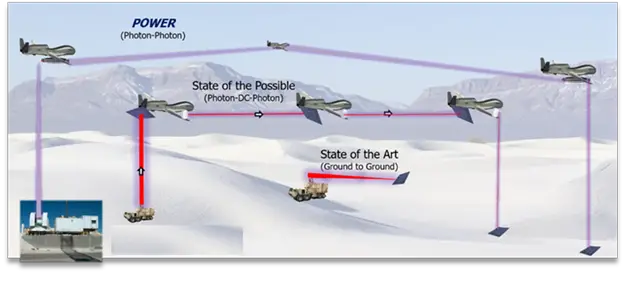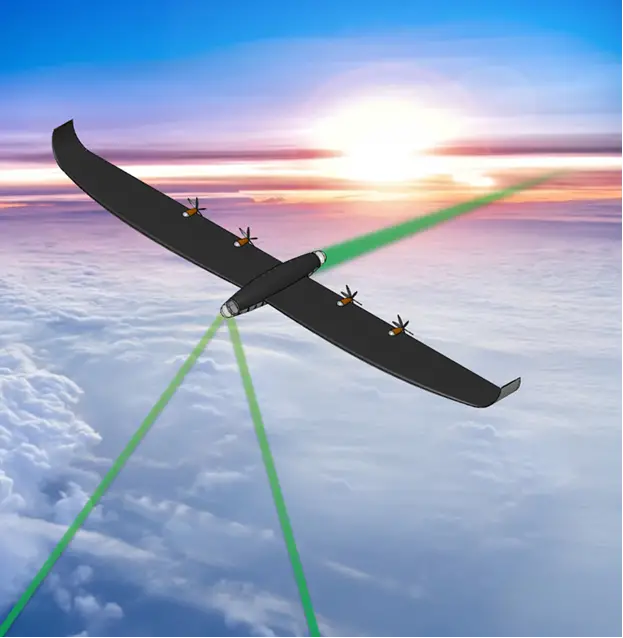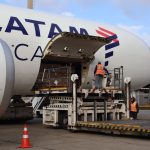DARPA is working on the POWER program to create a dynamic, adaptive, light-speed wireless energy network.
According to DARPA, the objective of the program is to is to create a dynamic, adaptive, speed of light wireless energy web. The goal of the Persistent Optical Wireless Energy Relay (POWER) program is to design and demonstrate airborne optical energy relays. These relays are a critical component necessary to allow ground-sourced lasers to be coupled with high-altitude, efficient long-range transmission. Additionally, such relays will enable future multi-path wireless energy networks.
“This is the internet for energy – harnessing resilient, multipath networks to flow energy from abundant sources to energy-starved consumers,” said Col Paul Calhoun, POWER program manager in DARPA’s Tactical Technology Office. “The military faces particularly acute energy challenges, which are driving this innovation. We often must operate far from established energy infrastructure and rely on liquid fuels that require precarious supply lines.”
Current military platforms that require long range, endurance, or significant weapons delivery capability must be physically large to carry the stored energy needed to complete a mission as liquid fuel. A wireless power transfer network transforms platforms into conduits rather than containers, which enables small inexpensive platforms with significant capabilities such as unlimited range or endurance.
See also: The USAF wants to install a nuclear microreactor at the Eielson base in Alaska
Power beaming may sound exotic, but it is the exact same physics used in wireless communication. “You need a power source; you convert that power to a propagating wave, typically electromagnetic, send it through free space, collect it in through an aperture, and then convert it back to electricity,” said Calhoun.
The challenge of efficiency
Conversion efficiencies remain a challenge, though. In a multi-hop network, converting from a propagating wave back to electricity and back to propagating wave at each node quickly accrues unacceptable losses. Each one of those conversions is relatively inefficient and multiplying them across a chain is impractical.
“The POWER program will develop efficient power beaming relays that redirect optical energy transmissions while maximizing beam quality at each point along the way, selectively harvesting energy as needed,” said Calhoun. “It is a three-phase development effort, culminating in a compelling energy relay flight demonstration.”

History has shown energy transport breakthroughs like the Roman roads, railroads, mechanized warfare, and air-refueling tankers that more rapidly and resiliently flow energy through the battlespace give a decisive military advantage. “We believe the next energy revolution will be enabled by the wireless energy web,” said Calhoun. “It will dramatically compress transport timelines and resiliently provide distributed energy to consumers in air, on land, on the sea, undersea, and in space.”
How redeemed poor Nicola Tesla would feel if he could see how the future he theorized in 1890 is setting the roadmap for the next technological revolution.














